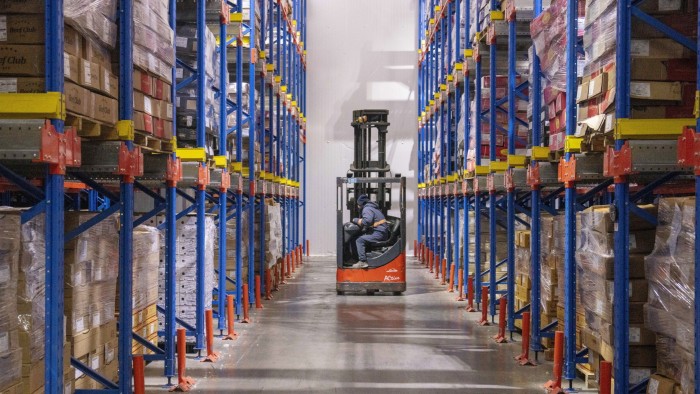Stay informed with free updates
Simply sign up to the Chinese economy myFT Digest — delivered directly to your inbox.
China’s industrial output growth slowed last month under the impact of US President Donald Trump’s tariffs, while retail sales softened as Beijing struggled with the twin economic challenges of the trade war and weak domestic demand.
The data, the first since the US and China agreed to slash tariffs last week in a trade war truce, showed that China’s industrial production expanded 6.1 per cent in April compared with a year earlier.
That was lower than 7.7 per cent growth in March but better than a forecast of 5.5 per cent by analysts polled by Reuters.
Retail sales, a measure of consumer sentiment, rose 5.1 per cent against a year earlier in April, the China’s National Bureau of Statistics said on Monday, trailing 5.9 per cent growth a month earlier and analysts’ expectations of 5.5 per cent.
“Trade war uncertainty is denting Chinese confidence, resulting in slower economic activity in April,” said Lynn Song, chief economist for greater China at ING, citing the slower rise in retail sales and fixed-asset investment in April. “Yet the impact on manufacturing was less than feared.”
China and the US agreed in Geneva last week to pause their tariffs, which US Treasury secretary Scott Bessent described as an effective “embargo” on trade between the world’s two largest economies. The sides now have 90 days to hammer out a deal.
Total US tariffs on Chinese goods are currently estimated at more than 40 per cent, down from as high as 145 per cent, while China’s levies on US products were reduced from as high as 125 per cent to about 25 per cent.
Chinese manufacturers have strived to redirect trade through third countries to avoid the tariffs. Trade data for April showed Chinese shipments to the US fell 21 per cent, while those to south-east Asian countries rose by an equivalent percentage.
Economists believe US importers will also use the 90-day respite to frontload shipments from China, out of concern that negotiations could break down, leading to a sudden reinstatement of the higher tariffs.
Such frontloading would support the Chinese economy in the coming few months, Goldman Sachs analysts wrote in a note, but they added a “caution that the near-term growth strength is at the cost of payback effects later”.
“[We] believe more policy easing is necessary to stabilise growth, employment and market sentiment,” they wrote, pointing to “still-soft domestic demand”.
NBS spokesperson Fu Linghui said that “current prices are generally low, which puts pressure on enterprises’ production and operations and affects residents’ employment and income increases”.
“It is important to promote a reasonable rebound in prices,” he added.
Recommended
Fu did not mention deflation, which is a sensitive issue in Chinese policymaking circles. But prolonged deflationary pressures, especially at the producer level, are fuelling concerns over the country’s economic recovery.
The data released on Monday showed China’s debt-stricken property sector remained a drag on the domestic economy, with new home prices in 70 cities down 0.12 per cent in April from a month earlier, a steeper decline than in March, when they dropped 0.08 per cent, Bloomberg reported.
Pre-owned home prices also continued to fall, reflecting weak consumer sentiment, economists said.
New home prices were down 4.55 per cent against a year earlier, and pre-owned home prices were down 6.76 per cent.
Data visualisation by Haohsiang Ko.




